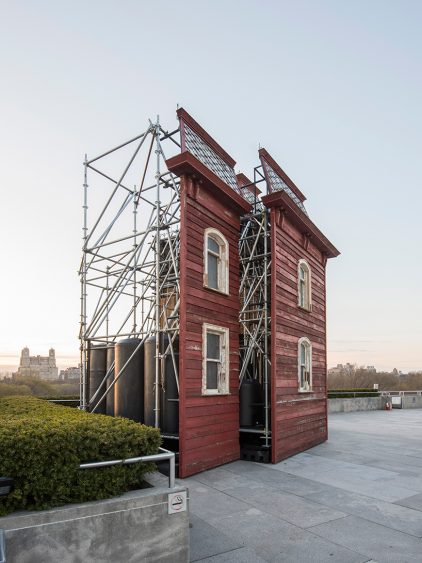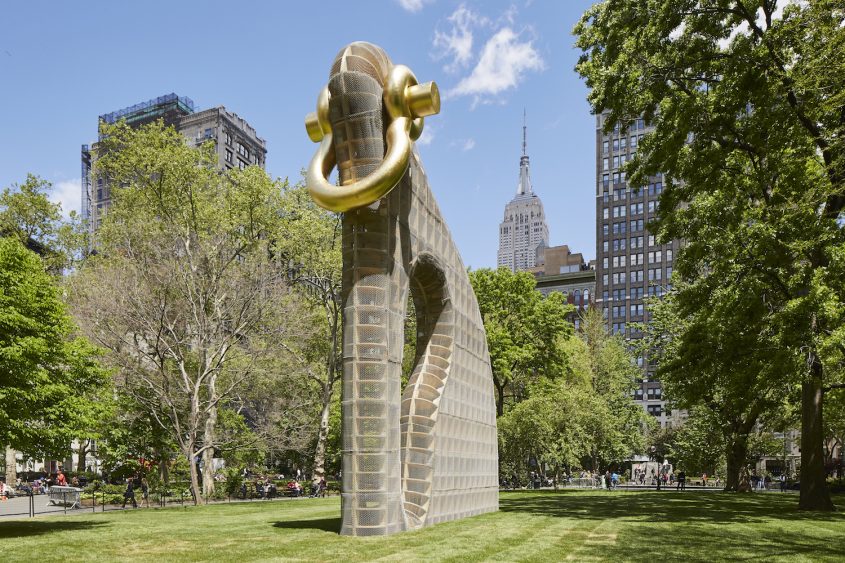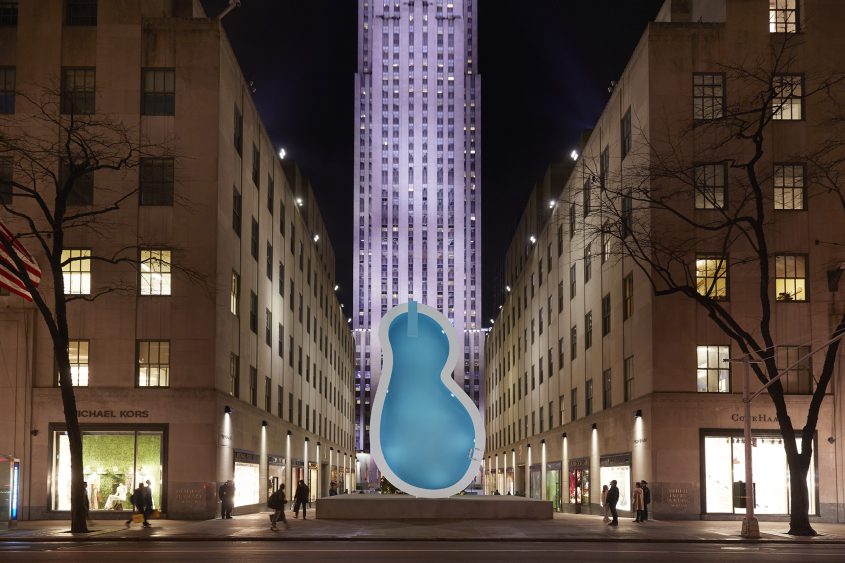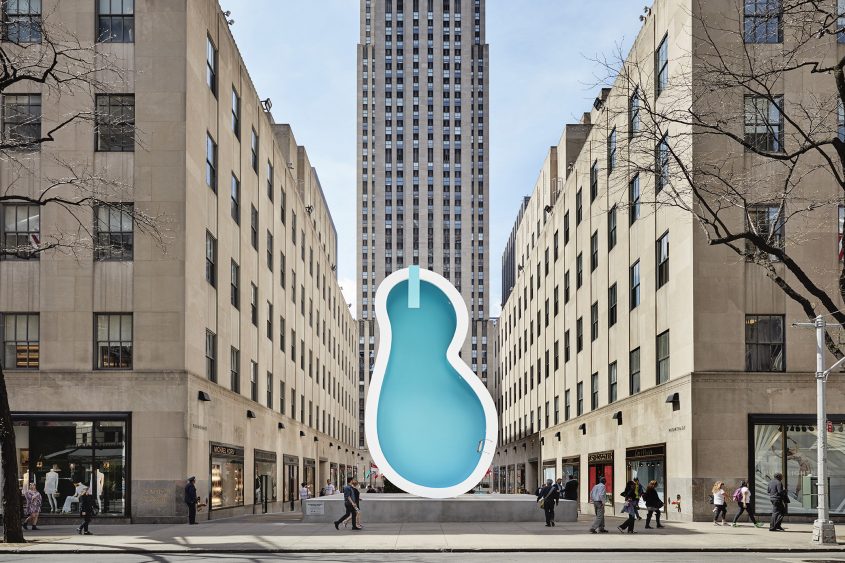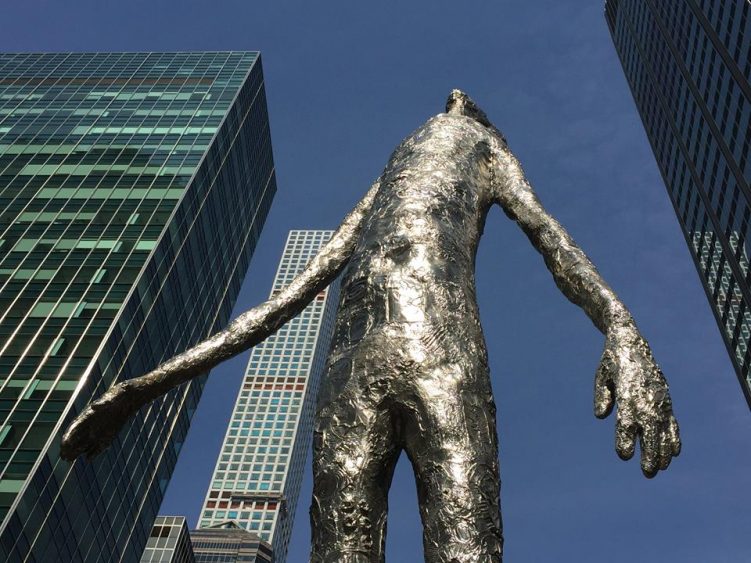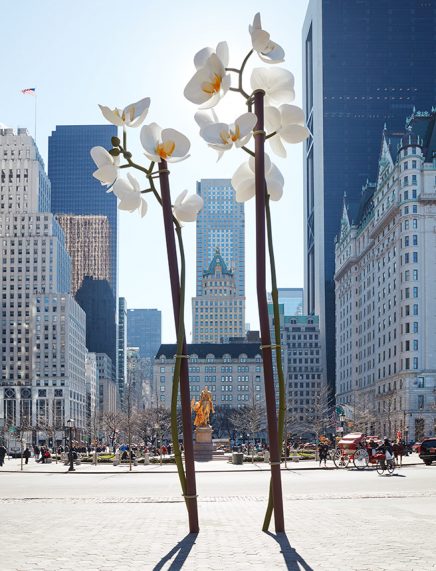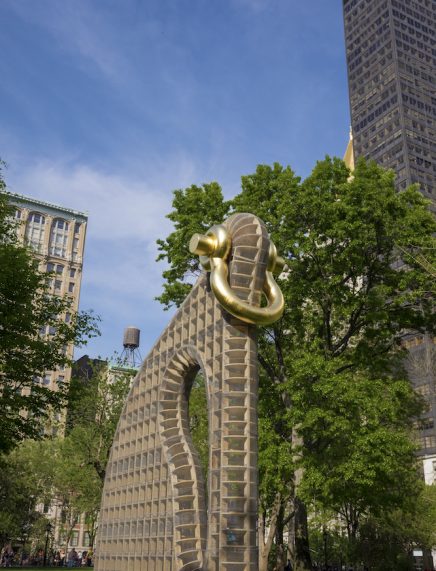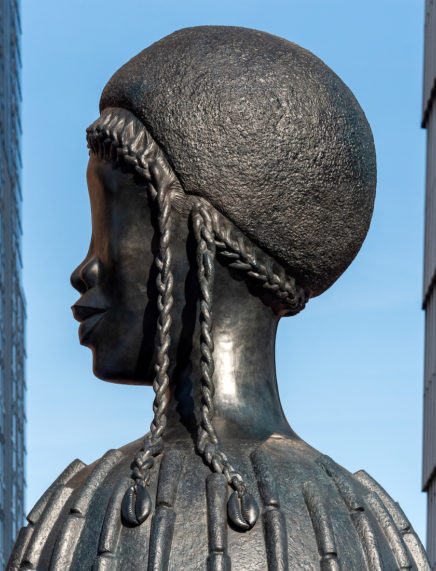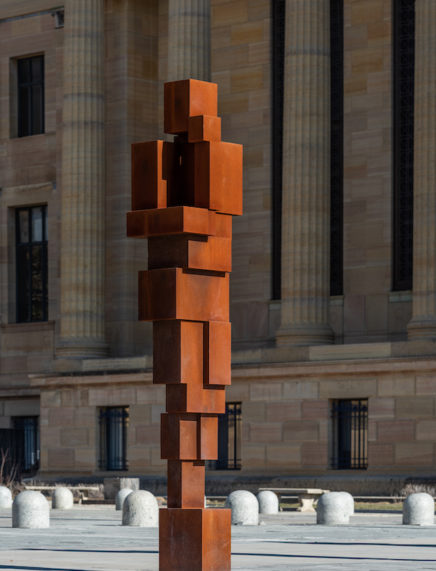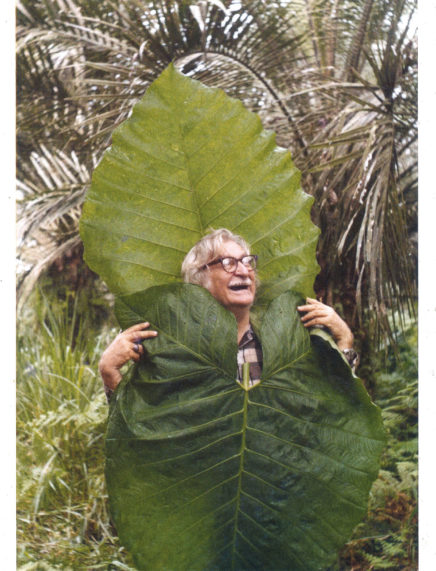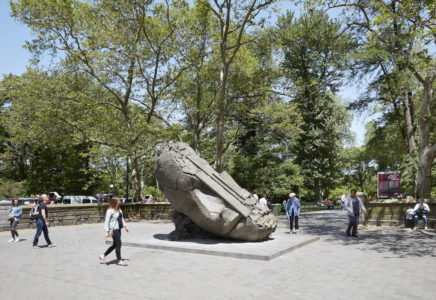Public Art in New York, Summer 2016 (2/2)
Here is the second part of our stroll around New York to let you discover public art on view in the city throughout the summer 2016.
Tom Friedman, Looking Up
On view until the end of July 2016
Park Avenue and East 53rd Street, New York
American artist Tom Friedman is notorious for using objects from everyday life in his work. Among the most unusual ones are toothpicks, chewing-gum, paper cups and plastic straws, cooked and dried spaghetti as well as hair, to name just a few. Tom Friedman also often plays with scale, creating at times tiny works of art or extremely imposing ones. The monumental sculpture on display at the corner of Park Avenue and 53rd Street is yet another example of these two aspects of his work: the play on scale and the use of everyday life objects. Looking Up is a 32 feet high human-like figure entirely wrapped in aluminum foil, the kind you find in your kitchen drawers. Looking Up, a disproportionate and at times unsettling human figure, invites you to direct you gaze elsewhere, toward the sky and the imposing New York buildings which, in turn, inevitably influence how the sculpture is itself perceived. Looking Up is an invitation to grow from the inside, to change your perspective, to look up to the point of nearly falling backwards, thus creating a sense of marvel and a sensation of vertigo.
Elmgreen & Dragset, Van Gogh’s Ear
On view until June 3rd, 2016
Rockefeller Center
The duo of Scandinavian artists Michael Elmgreen and Ingar Dragset became famous for Prada Marfa (2005), a life-size replica of a Prada store complete with a window display of the Fall/Winter 2005 fashion designer’s collection and placed in the middle of the Texas desert. Often used as a fashion photo shoot set or as a pilgrimage site for pop stars, this sculpture has become a true cultural attraction for this desert area. What is most intriguing for the observer is the awkward association between the fashion store and its location in the middle of the desert. This dichotomy is central to the understanding of Elmgreen’s and Dragset’s work. It is also present in one of their last works: Van Gogh’s Ear, a 30 feet high vertical pool shaped as Van Gogh’s ear. This work, currently on view at the Rockefeller Center in New York, offers a reflection on the question of vital space.
Big Bling, Martin Puryear
Madison Square Park
On view from May 16th, 2016 to January 8th, 2017
For the past 33 years, Madison Square Park Conservancy’s cultural program has been displaying, each year, a new temporary public art installation in the park. In 2016, American sculptor Martin Puryear presents Big Bling: 40 feet high, 37 feet long and 10 feet wide, it is the largest sculpture ever created by the artist. Once assembled and installed, Big Bling will be composed of seven compressed plywood sections topped with a gold-leafed shackle. The sculpture is open to multiple interpretations: an abstract animal-like figure, a structure evocative of architecture or a suggestion of limitation and imprisonment. The term “bling” is also rooted in the urban youth and rap culture of the 1990s and refers to the flashy accessories and jewels worn by young people at that time. You can follow the installation of the artwork by visiting the Madison Square Park blog.
Cornelia Parker, Transitional Object (PsychoBarn)
The Metropolitan Museum of Art’s Roof Garden
1000 Fifth Avenue at 82nd Street
On view through October 31st
Let’s reach new heights. We are inviting you to enter the Metropolitan Museum of Art and go up to its famous roof garden. British artist Cornelia Parker’s last monumental sculpture, Transitional Object (PsychoBarn) was inspired by Edward Hopper’s paintings and by the Bates Motel, Alfred Hitchcock’s iconic house featured in his movie Psycho. In an interview for the MET regarding this work, Cornelia Parker explains that she wanted to display her architectural structure on the roof garden because of the unusual height of the site in a city characterized by the density of its skyline. PsychoBarn is approximately 30 feet high and was built with the recycled debris of an old barn painted the same color as the structure. However, what seems to be a whole house is actually two assembled facades supported by scaffolding, thus contrasting, once again, with the imposing and solid Manhattan skyline.
